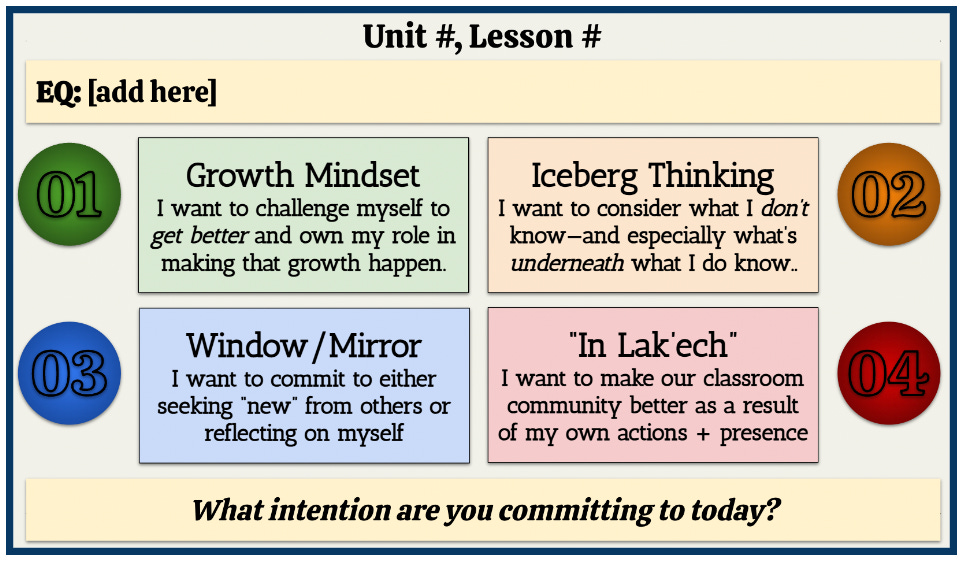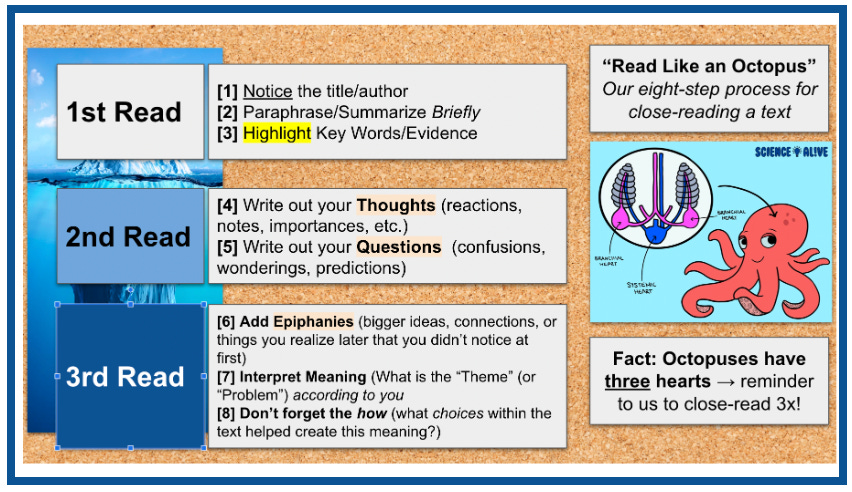5 More of My Favorite Beginning-of-Year Resources
And just like last year's post, I've included templates/tools you for your classroom
Last summer I shared out some of the main tools I use as a teacher in the opening weeks of the school year—including templates that could be copied/adapted for other teachers to use. My hope was that having everything in one place would make it a better resource, especially if you wanted to refer back to it at a later date.
Since it seemed to go over pretty well, I decided to run it back again this summer: five more of my favorite tools/resources that [a] are core to my own classroom community and [b] I’m happy to not only share but help you adapt/implement for your own classroom.
Just like last year, too, if you have specific questions about any of them, feel free to reach out via comments on this post, on Twitter (perpetually calling it that at this point) or email at marcus.luther@gmail.com—and I’ll respond when I get a chance!
(While many are reporting back to their classrooms very soon—or already have!—I still have a few more weeks, so this is actually a great time if you wanted to chat about any of the tools/resources here!)
#1 - Intention-Setting Slide To Begin Lessons
Building off a conversation and idea last year from our co-creator of The Broken Copier
, I designed this slide template for the upcoming school year to begin each lesson with. The goal is pretty straightforward: to have each student name an intention for the lesson—one that they’ll circle back to at the end of class to reflect on how they did.While the templates four intentions are aligned with our classroom core beliefs, you’re welcome to adjust it to whatever you think is best for your students. As Jim noted, the main goal is to prioritize students naming and committing to an intention to begin each lesson. My hope is that this slide template will help with that!
Preview of Intention-Setting Slide + End-of-Lesson Reflection Slide
Template Copy To Create Your Own (see Speaker Notes for more info!)
#2 - TQE Introduction Lesson with “Sticks” by Saunders
I’ve shared before about how integral Marisa Thompson’s Thought-Question-Epiphany system is to our classroom, and I wanted to go one step further here by sharing the lesson I use to introduce this close-reading method to my juniors.
The first short story we read is “Sticks” by the remarkable George Saunders: one of the most efficient-yet-abundant texts (it’s only two paragraphs!) I’ve had the chance to teach in terms of intentional, thought-provoking details—making it a phenomenal, eye-opening lesson for students in terms of what they can find in a piece of literature.
(Note: if you’re an ELA teacher, one of the best books I’ve encountered in the past year is A Swim in a Pond in the Rain by George Saunders, in which he opens to the door to his own teaching method using several famous Russian authors. As a teacher of reading and writing, it’s a gift, plain and simple—and speaking of gifts, I’m indebted to one of our Broken Copier readers for first getting it in my hands, too!)
#3 - Narrative Poem Activity with “First Grade” by Koertge
This lesson has been a staple for some time in my classroom in our opening week—as it gives students a chance to reencounter what a poem can be; it reminds students that in great literature every choice matters (even punctuation!); and, most importantly, it gives them a chance to write narratively in a substantive way.
Once we’re finished reading and discussing Ron Koertge’s short, two-stanza poem “First Grade,” we flip the paper over to shift into our writing. “We’re writing a poem the first week?” one student inevitably asks. Many sets of eyebrows raise initially each year, and then students start writing each year and I start reading and a foundation is established in our classroom to start building community.
I love this poem and I love this lesson for so many reasons—and maybe you will as well!
#4 - Unit Plan and Lesson Calendar
While this isn’t the jazziest of resources I’m sharing in this post, many have asked over the past year about what planning looks like for me—so I wanted to share out the template I lean on for mapping out instructional units: a fairly-simple Google Doc where I brainstorm the “big picture” stuff, map out lesson-by-lesson calendar, and then identify key tasks.
Perhaps most importantly, I try to include as much as possible on this document, including hyperlinks to each lesson slide deck as I get them ready (the sample below gives a preview of what this looks like for me). In this way, this unit plan then also becomes a great student-facing tool, allowing them to take ownership of their own learning experience as they look ahead and access all the resources you embedded.
#5 - Collaborative Slide Deck Activity
I think setting the tone early and often with collaborative learning is essential to the classroom becoming what it can ultimately become, and one of my favorite tools for this intentional tone setting has become this “collaborative slide deck” activity.
In this activity, students follow up their own independent reading and annotations (usually on a hard copy reading) by sharing with their group members and deciding what to add to their assigned “slide”—and they then get a chance to browse what other groups did on the rest of the slides once the activity is finished (which then creates a great student-created resource to hold onto, too).
A Closing Note
Every summer offers different things to different educators, but for me this one has given me a chance to really think deeply about not just my own practice and perspective as a teacher, but my gratitude for this work overall. Twelve years in and I feel like I have just as much energy and hope going into Year 13 as I did back in Year 1.
I don’t take that for granted at all.
That goes for The Broken Copier, too. It feels like every day I hear from someone else, often in a different time zone or even another country, about how they enjoyed one of our conversations with the many thoughtful educators out there or decided to try out one of the strategies we have posted here—and first and foremost, for those sending those kind notes, they mean the world.
The goal of The Broken Copier was to create a teacher-centered conversation to better support teachers, and seeing it lived out more and more is incredibly reaffirming and refueling.
So thank you! And if you know another teacher or educator who you think would enjoy joining this community, feel free to send them a link and invite them in! The vision remains the same: teaching is community work, and the more we can share that community with, the better! —Marcus








Thanks for all of the resources!!
amazing resources. thank you for sharing! the collaborative slide deck activity reminds me of the iron chef eduprotocol! highly recommend checking the protocols out they have changed my life :)